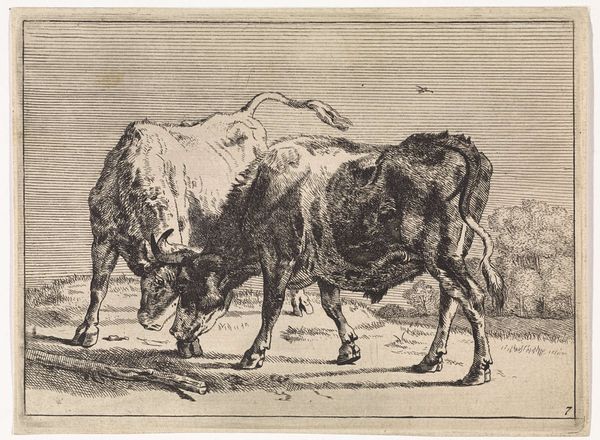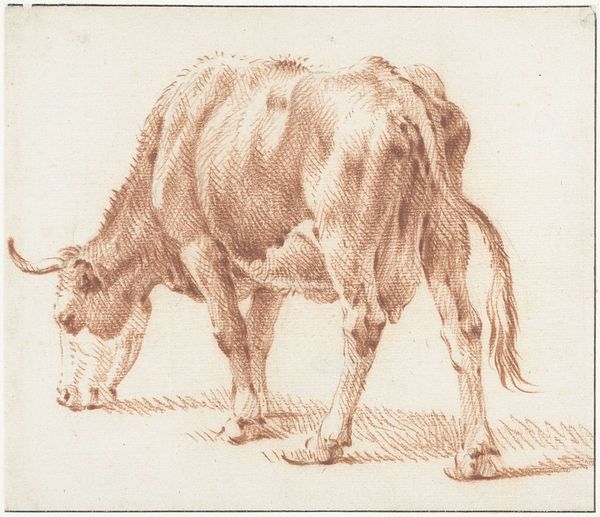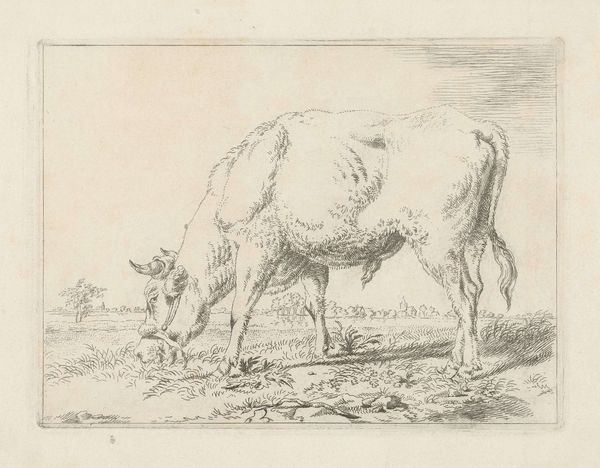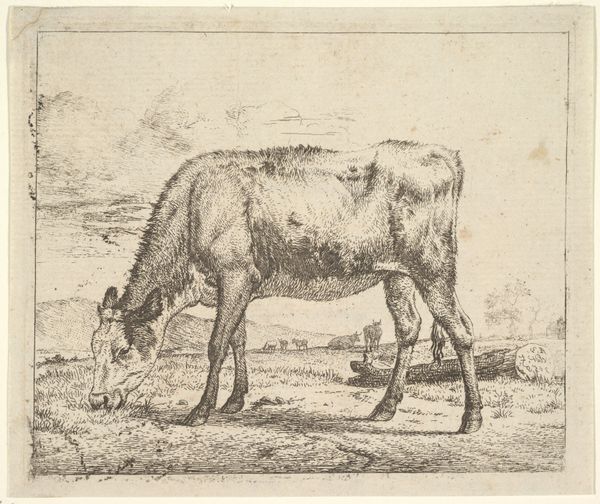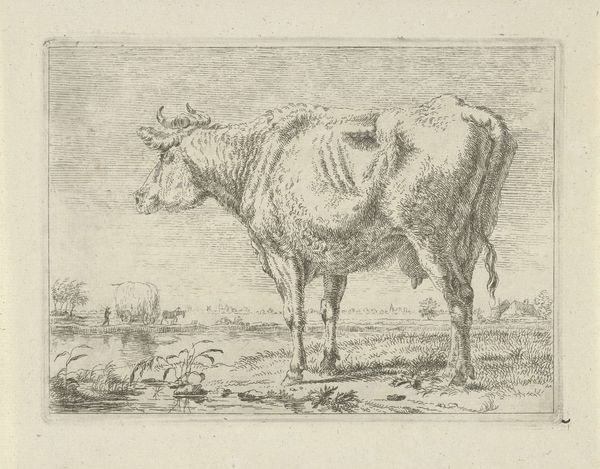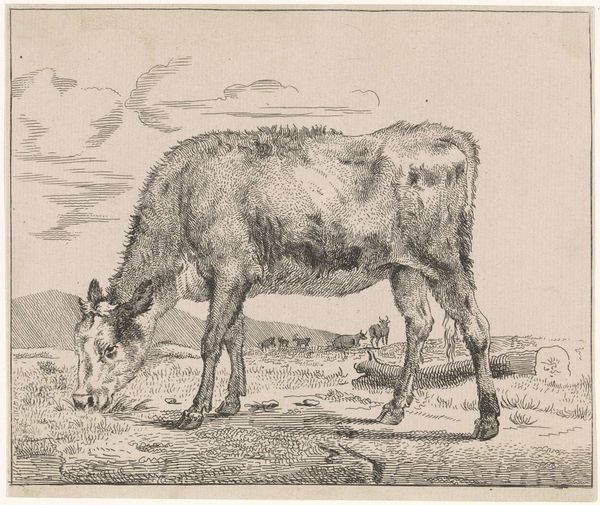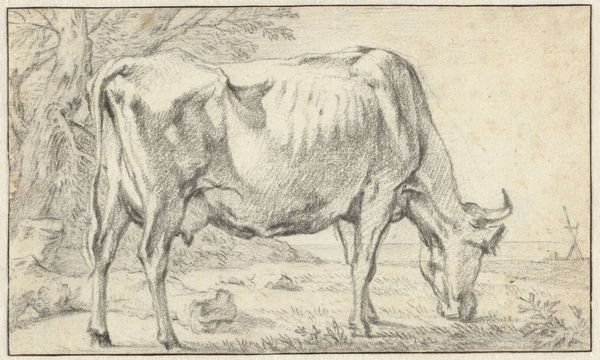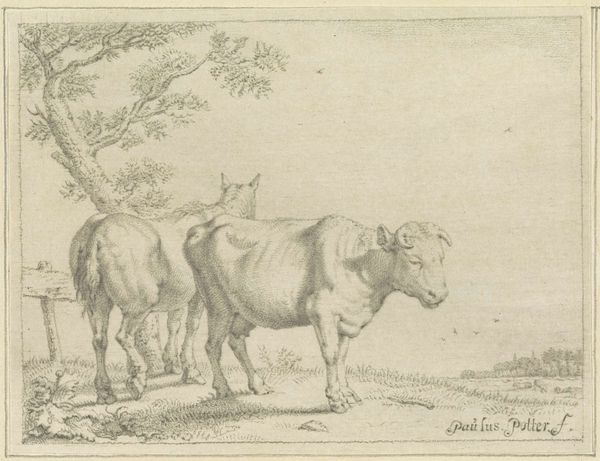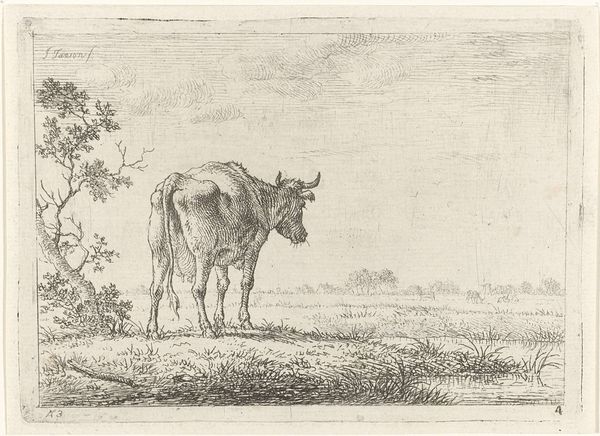
drawing, pencil
#
drawing
#
amateur sketch
#
toned paper
#
light pencil work
#
quirky sketch
#
pencil sketch
#
landscape
#
personal sketchbook
#
romanticism
#
pen-ink sketch
#
pencil
#
sketchbook drawing
#
pencil work
#
genre-painting
#
sketchbook art
#
realism
Dimensions: height 90 mm, width 116 mm
Copyright: Rijks Museum: Open Domain
This is Jan Dasveldt's "Grazing Bull," a pencil drawing, likely made in the Netherlands sometime in the late 18th or early 19th century. At that time, the Dutch Republic had been in decline for a century, and its economic and political power was waning. Dasveldt's choice to depict a bull is therefore interesting because cattle have long been a Dutch symbol of wealth and prosperity. Was Dasveldt trying to remind viewers of the "good old days?" Perhaps. But it's also worth noting that Dasveldt was part of a larger artistic trend. During this period, many artists began turning away from grand history paintings and towards more humble, everyday subjects like landscapes and animals. To understand the social role of art and the politics of imagery, then, we must consider the ways in which artists, critics, and institutions shape the reception of artworks. And we need to keep in mind the social conditions that shape artistic production. By studying these kinds of historical sources, we can start to understand the meaning of this seemingly simple drawing.
Comments
No comments
Be the first to comment and join the conversation on the ultimate creative platform.

